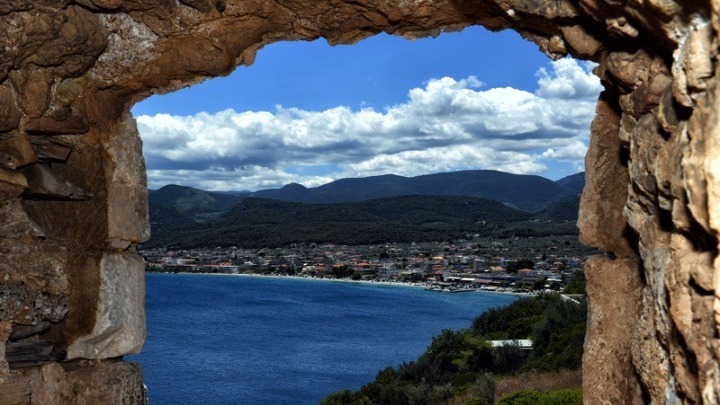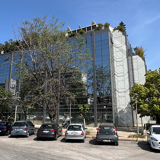According to a new study by the Economic Analysis Division of the National Bank of Greece, investment needs in the Greek islands are estimated at €35 billion over the next decade. The aim is to upgrade critical sectors such as transport, energy, water supply, and waste management.
The challenge lies not only in securing adequate financing sources, but also in establishing a modern governance framework capable of setting priorities, allocating resources predictably, and transforming funding into tangible, integrated projects. Whether the current success of the Greek islands will be gradually undermined by outdated infrastructure or transformed into a strategic advantage that solidifies their position among the world’s top destinations will depend on this capacity. The goal is for the islands to serve as a “model” for the sustainable upgrade of Greek tourism.
Greece is, by nature, a maritime tourism destination, with its islands having doubled arrivals over the past 15 years, reaching 16 million visitors in 2024. Impressively, Greek islands account for 11% of global island tourism, and seven of them rank among the world’s 30 most popular island destinations—on par with iconic locations such as Bali and Hawaii. This strong momentum, however, is accompanied by increasing pressure on infrastructure. During peak months, tourism density reaches 33 visitors per km² per day—compared to just 2–3 in the rest of Greece and the Mediterranean.
Despite this sharp seasonal surge in demand, infrastructure investment per capita over the past 20 years has remained comparable to that of the mainland, even though island regions face significant structural challenges. Most notably, the population of the islands increases by an average of 50% compared to the permanent population—occasionally exceeding 100%—placing extreme pressure on local infrastructure.
The Mainland Comparison
In mainland Greece, although there are isolated cases (such as Halkidiki, where seasonal population increases also approach 50%), the phenomenon is more limited, with average increases not exceeding 5%. Additionally, islands bear a structural cost premium of around 15%, due to higher logistics expenses, lack of economies of scale, and the need for contingency infrastructure in remote areas. Without targeted infrastructure upgrades, the growth of tourism risks becoming unsustainable.
According to our estimates, in order to meet rising needs, annual infrastructure investment—which currently amounts to approximately €2 billion, mostly in transport and basic utilities (e.g., energy and water supply)—must be supplemented by:
(i) roughly €1 billion annually to cover the 50% seasonal population surge, and
(ii) an additional €0.5 billion to address the estimated 15% "island premium."
In total, the required investment effort amounts to approximately €3.5 billion annually, or €35 billion by 2035. This level of investment is necessary to absorb increasing demand without exceeding the islands' carrying capacity and to strengthen their economic foundations.
A Strategic Shift Toward Sustainable Growth
In this context, emerging global tourism trends present a window of opportunity by significantly increasing the return on investment. Rising demand from long-haul, high-spending markets (such as the United States and Asia), combined with a growing preference for off-peak and less-explored destinations, creates the conditions for a strategic transition from volume-driven to sustainable development. If these trends are effectively leveraged, Greek islands could boost average spending per tourist by approximately 15% by 2035 and reduce the July–August arrival concentration from 42% to 34%.
Financing: Toward a Stable, Predictable Investment Framework
With this opportunity at hand, priority must be given to the creation of a stable and predictable financing mix to support the necessary investments. The first and most important source is local revenues: currently, approximately €0.4 billion is collected annually from accommodation and cruise fees in the islands—nearly half the amount needed to address the seasonal population increase. The key lies in instituting full revenue ring-fencing, ensuring that these funds are reinvested in the regions from which they originate and directed toward critical local infrastructure.
Additional funding sources include:
(i) the mobilization of private capital through Public–Private Partnerships (PPPs) and concessions, and
(ii) the use of European and international financial instruments via a combination of grants (e.g. RRF, NSRF) and low-interest loans from institutions such as the European Investment Bank.
However, the challenge is not solely financial. Without an appropriate governance architecture, available resources will remain trapped in planning stages without translating into operational infrastructure. Fragmentation of responsibilities among ministries, regions, and municipalities continues to delay projects and hinder prioritization. Notably, 75% of island municipalities lack technical departments, resulting in many projects stalling at the design phase.
Rethinking Governance: From Fragmentation to Execution
While governance related to destination management, branding, and tourism promotion can function effectively through decentralized structures and local coordination (as envisioned in Law 4875/2021), infrastructure governance requires a more centralized and institutionally robust mechanism. This mechanism must act as an executive tool for the planning, financing, and implementation of the vital infrastructure needed by local authorities to succeed.
In this light, a coherent proposal could be built around the establishment of a unified authority to centralize projects and resources.
A National Island Infrastructure Authority
The creation of a National Island Infrastructure Authority could serve as a central hub for strategic planning with the following responsibilities:
To consolidate and allocate resources with predictability
To prioritize projects based on objective data, aligning national goals with the specific needs of island regions
To accelerate implementation through unified digital fast-track permitting systems
To operate effectively, such an Authority must be supported by two critical complementary pillars:
(i) The forthcoming Special Spatial Framework for Tourism, which can provide the legal foundation for integrated development planning in the islands and align infrastructure priorities accordingly.
(ii) A robust technical support and monitoring mechanism, featuring centralized project maturation, inter-municipal engineering clusters, and institutionalized performance indicators.
Successful examples from the Balearic and Azores Islands demonstrate that integrating these three pillars into a cohesive "institutional triangle" significantly improves effectiveness and accelerates project implementation. Applying such a model to the Greek islands could serve as a blueprint for the broader transformation of tourism destinations across the country.















